Weeks 9-11: Level 2 Design (Part 2)
In the past three weeks, I took a break then finished an initial version of Level 2, fleshing out the skeleton that I made previously. I drastically shortened it and focused on the last section because of time restraints and so that it wasn't too long. Here's what I have now:
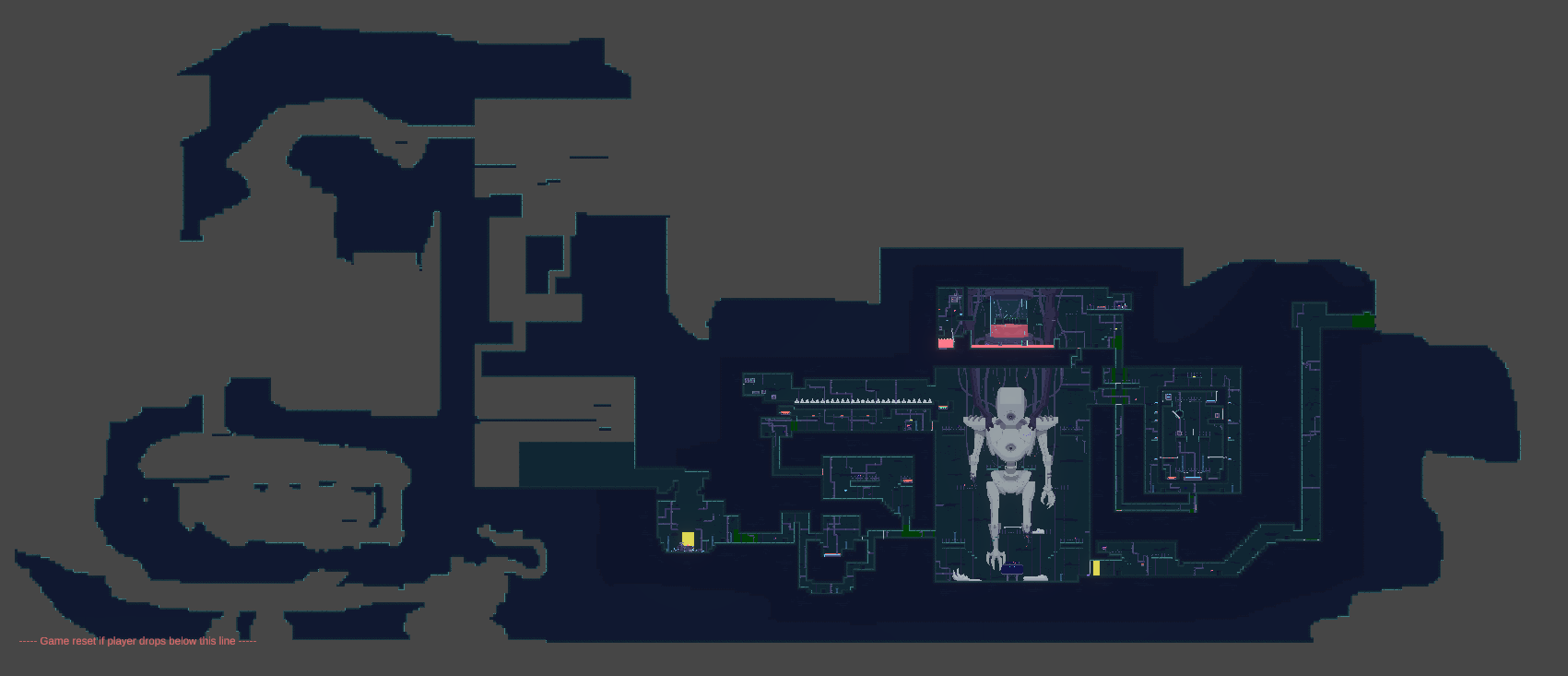
I may shorten this even more, by getting rid of most of the remaining skeleton later, while keeping a few key elements for the sake of narrative and introducing mechanics.
Here is a closer view of the completed level, which I finished in time to present at a showcase. This gave me a lot of playtesting data.
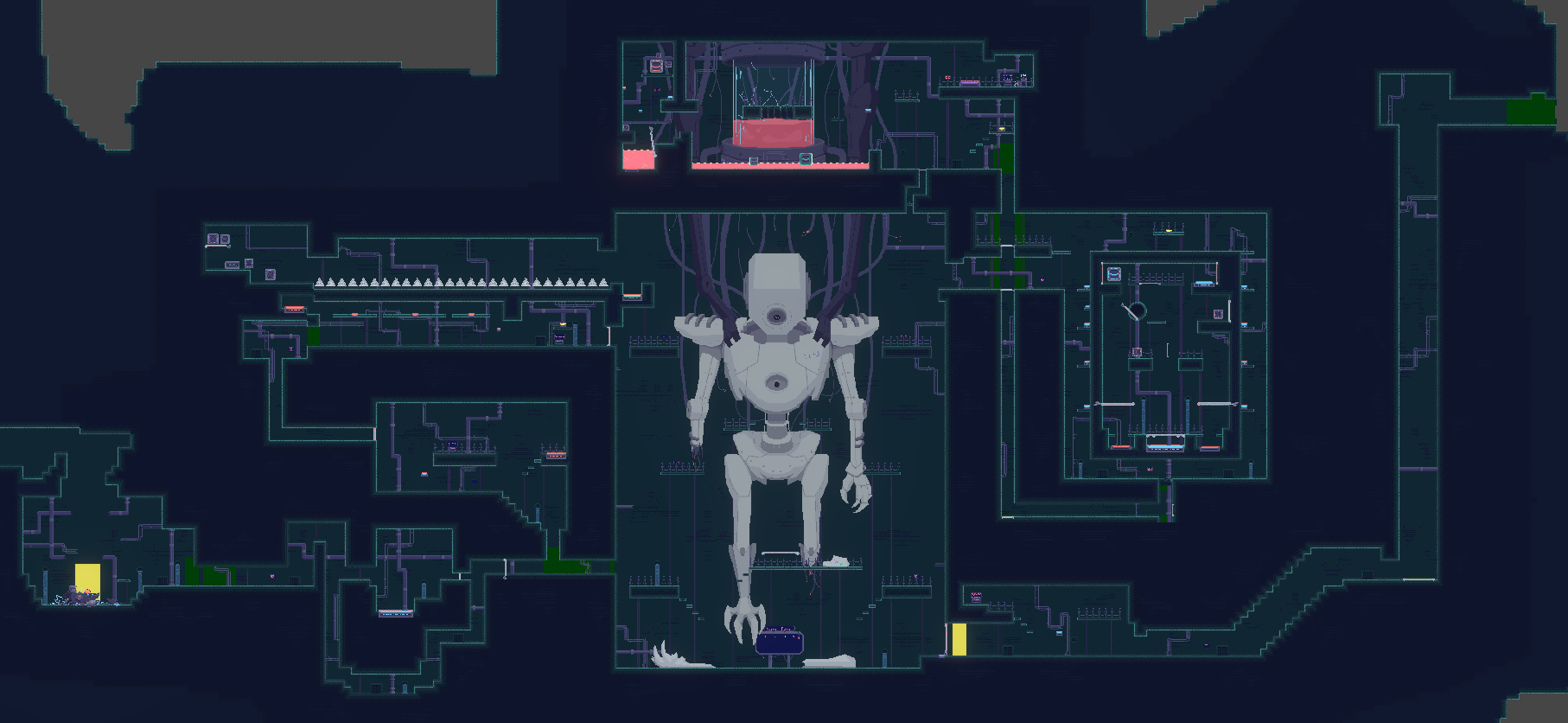
To create it, I adapted major mechanics from a prototype scene into major power levels, in which a major switch must be pressed to continue.
For the intro zone, I wanted to demonstrate the new functionality of moving and rotating platforms restricted by triggers, so I had a switch that, when pressed, plays a sound effect and moves the platform, much more slowly than normal so the player can see it. It has evolved from the prototype in which a player will be blocked by a platform and cannot proceed until they press a switch behind it.
I updated this from the original so that the player will go right before they reach the room with the switch, and are likely to press it unknowingly. The added sound effect and reduced movement speed of the platform is meant to communicate the mechanics of this to the player.

The first power switch is not directly inspired from anything in the prototype, but rather meant to show the player that these switches may not lie on their immediate path.
The second power switch is inspired from an idea for a conveyor belt I had in the prototype, combined with a button that shows the player that dynamic objects can also be moved by these platforms (that was featured in an isolated block puzzle in the prototype).
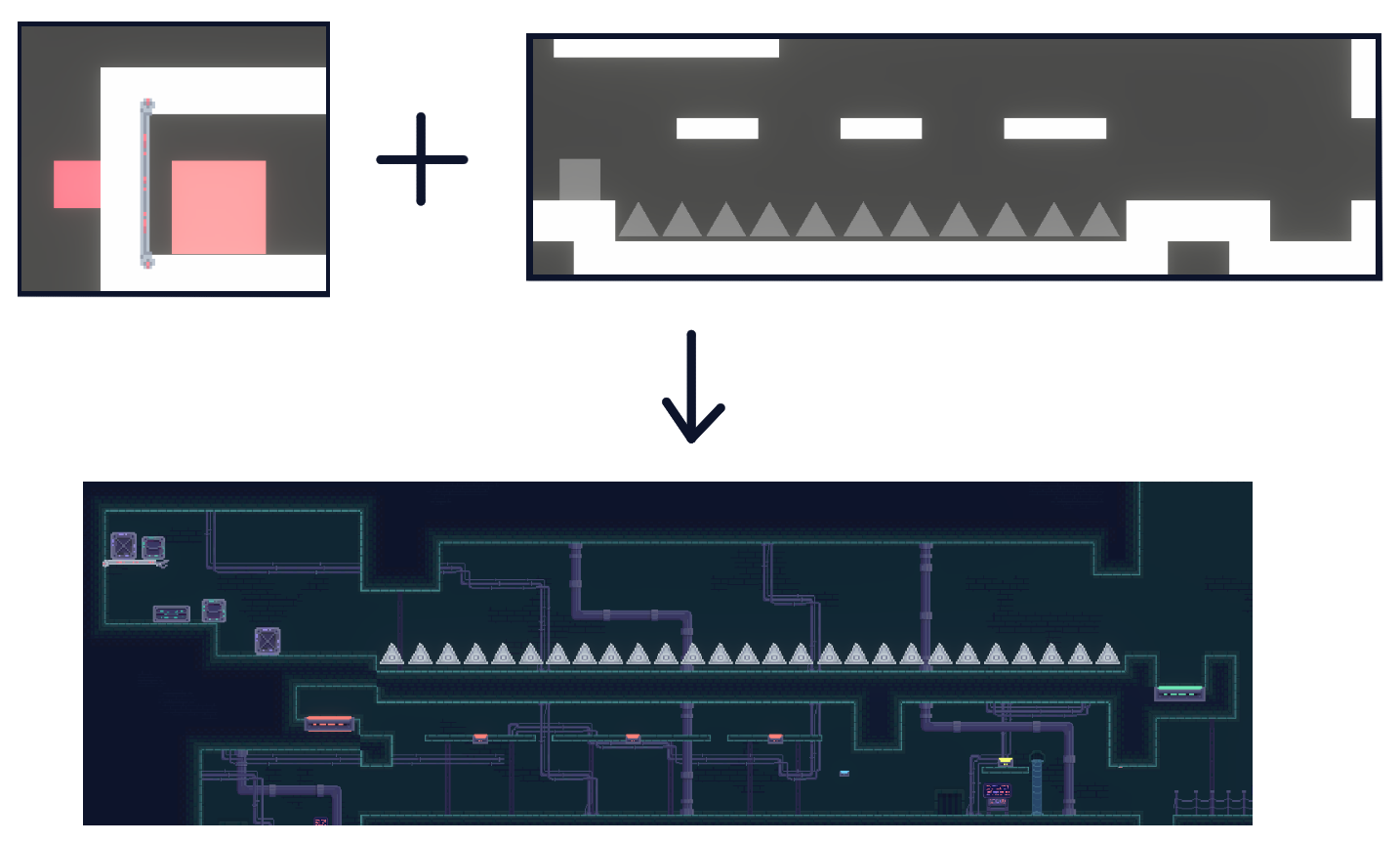
The third power switch is an iteration on the isolated block puzzle in the prototype. I use color coding with the blocks and platforms to show that the red blocks should interact with the red switches at the bottom, and I use size & alignment to show that the larger blue block that corresponds to the large blue switch in the middle is the most important part of the level.
(I'll touch on how this conveyance worked in playtesting next week when I go over revisions.)
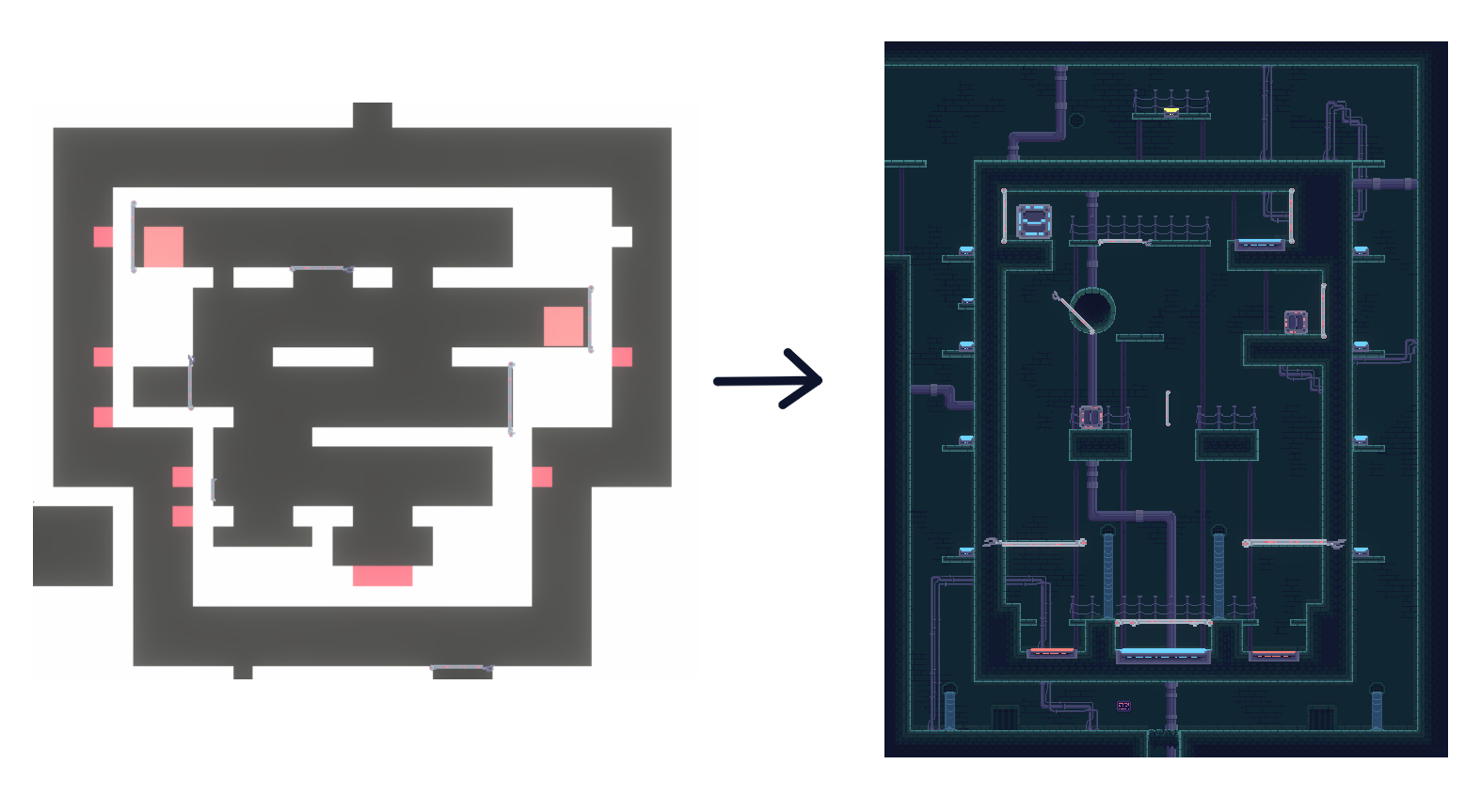
In the final level, I wanted to use floating material again, so I took inspiration from the prototype, where platforms make an object go against the material's float property:
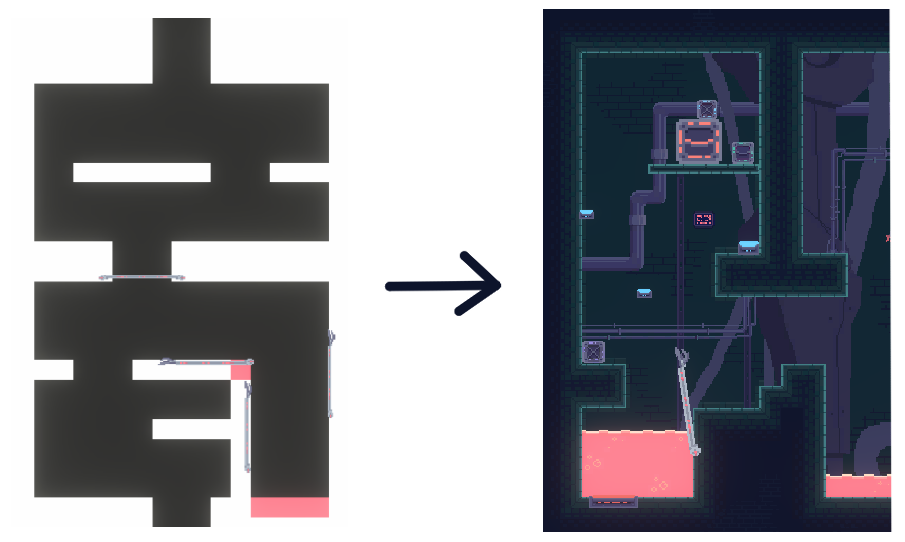
Since the middle room serves as a hub, it's not immediately clear where the player should go first. To remedy this, I made a power meter that is color coded to the power level switches in the level, with numbers that indicate the order they should be pressed.
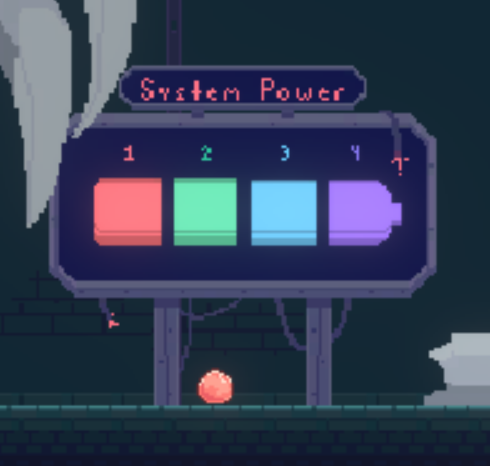
When the player can first access this area, the camera is darkened and the screen is blank save for the colored numbers:
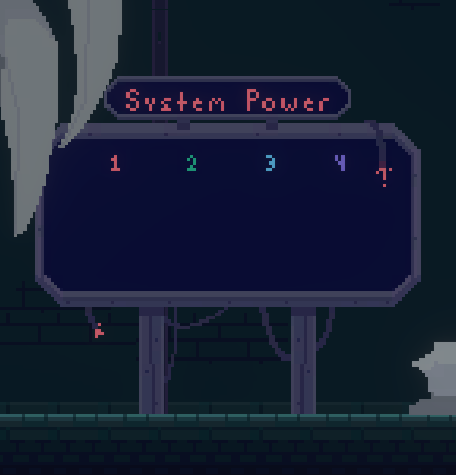
After the first switch is pressed the room will brighten, and as the player progresses the power meter will go up.
This meter is located at the bottom of the hub, next to some added robotic wreckage:

The fourth and final power switch is located in a room above the robot, and I made a new asset to add to the environment: a cracked jar with pipes attached that seem to lead down, into the facility and the robot. This is the power source of the lab, and part of the reason power went out.
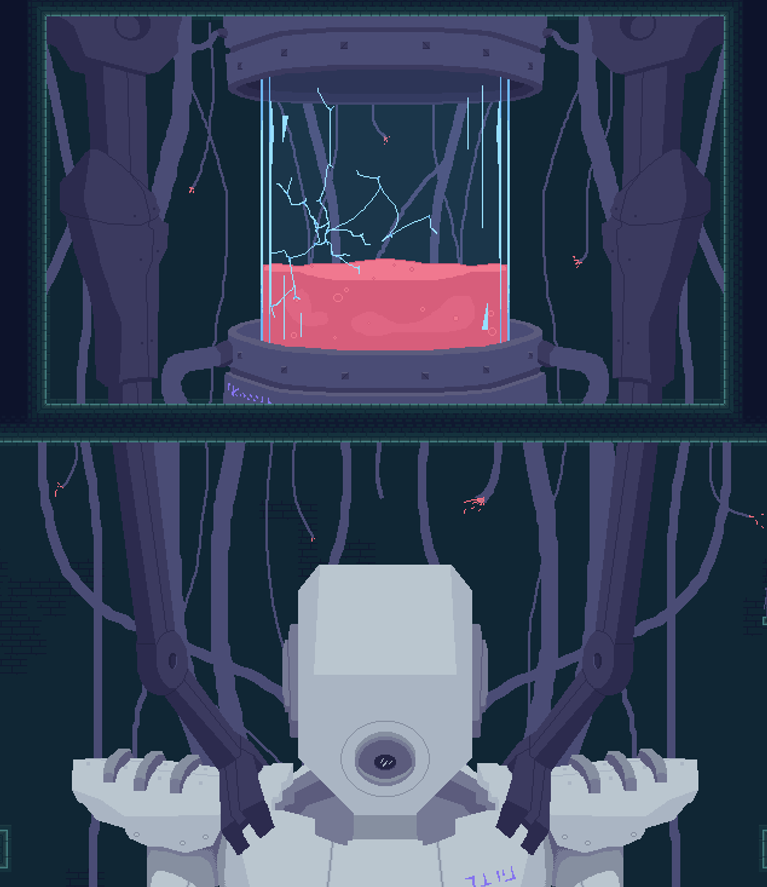
Here's a view of the level's current trigger interactions, with the OnDrawGizmos visibility turned on:
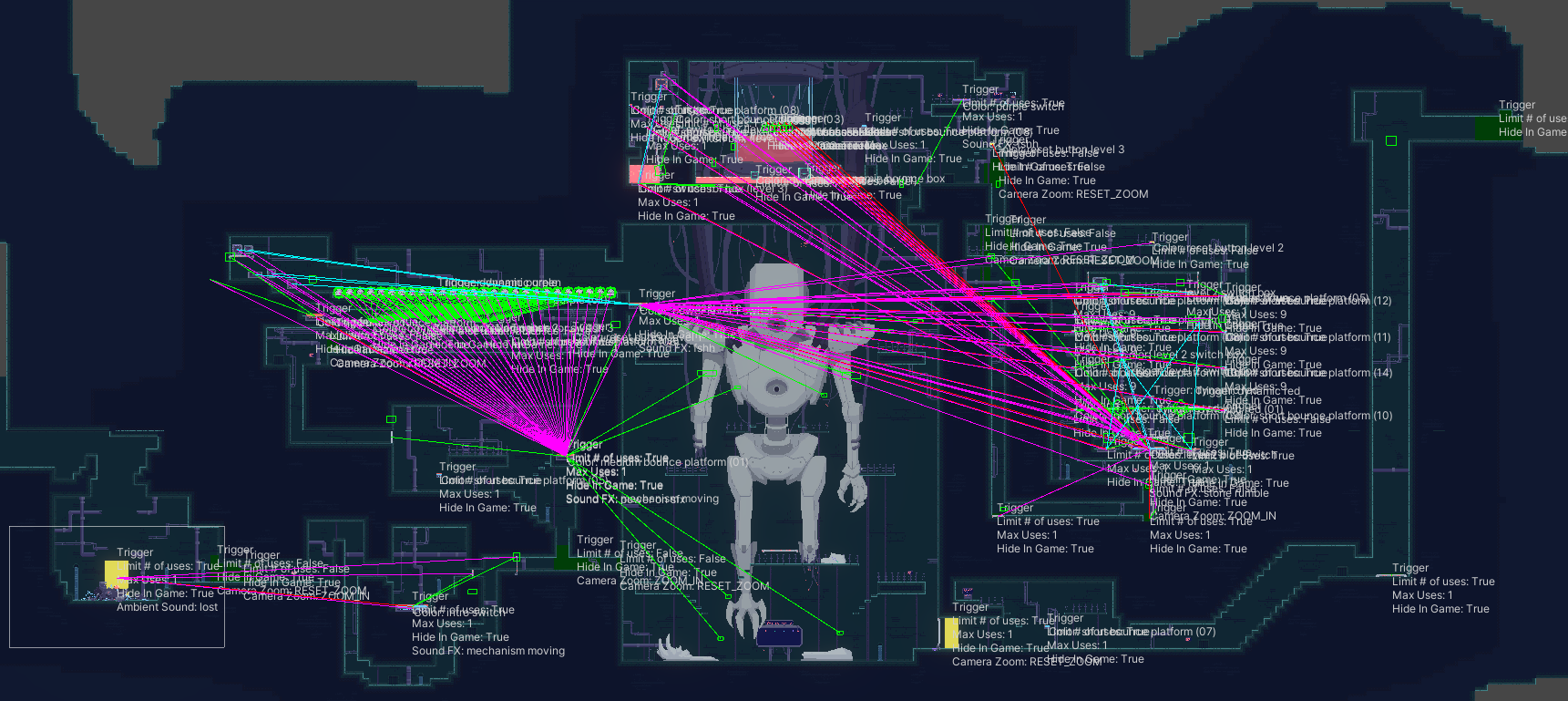
It's a lot.
Next week I'll revise this level based on playtesting data I got from the showcase, and release a new demo. Until then!
ECK-423
Level 2 of ECK-423 (Discontinued for now)
| Status | In development |
| Author | Boltcry |
More posts
- Week 12: Revising Level 2Apr 07, 2023
- Week 8: Level 2 Design (Pt 1)Mar 08, 2023
- Week 7: Serialized Transform ClassFeb 28, 2023
- Week 6: Checkpoint SystemFeb 21, 2023
- Week 5: Play DiscoveriesFeb 14, 2023
- Week 4: Move/Rotate Timer & GUI FeaturesFeb 07, 2023
- Week 3: Code optimizationJan 31, 2023
- Week 2: Move/Rotate MechanicJan 23, 2023
- Week 1: Organization & Controller UpdatesJan 17, 2023
Leave a comment
Log in with itch.io to leave a comment.